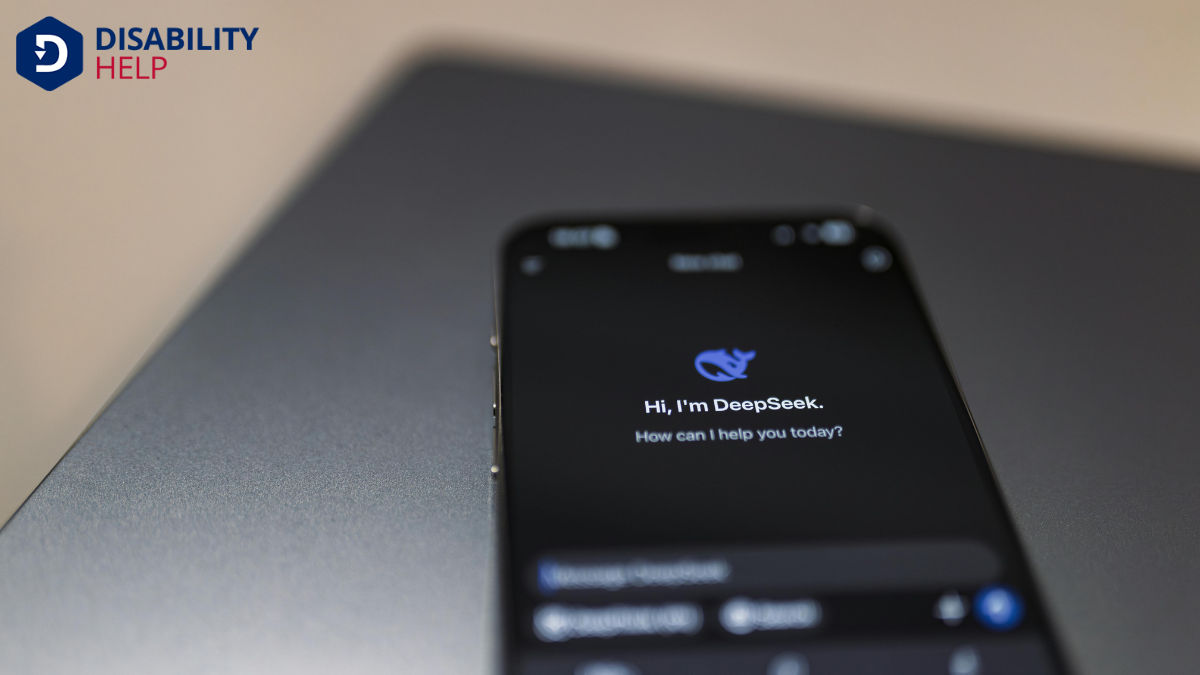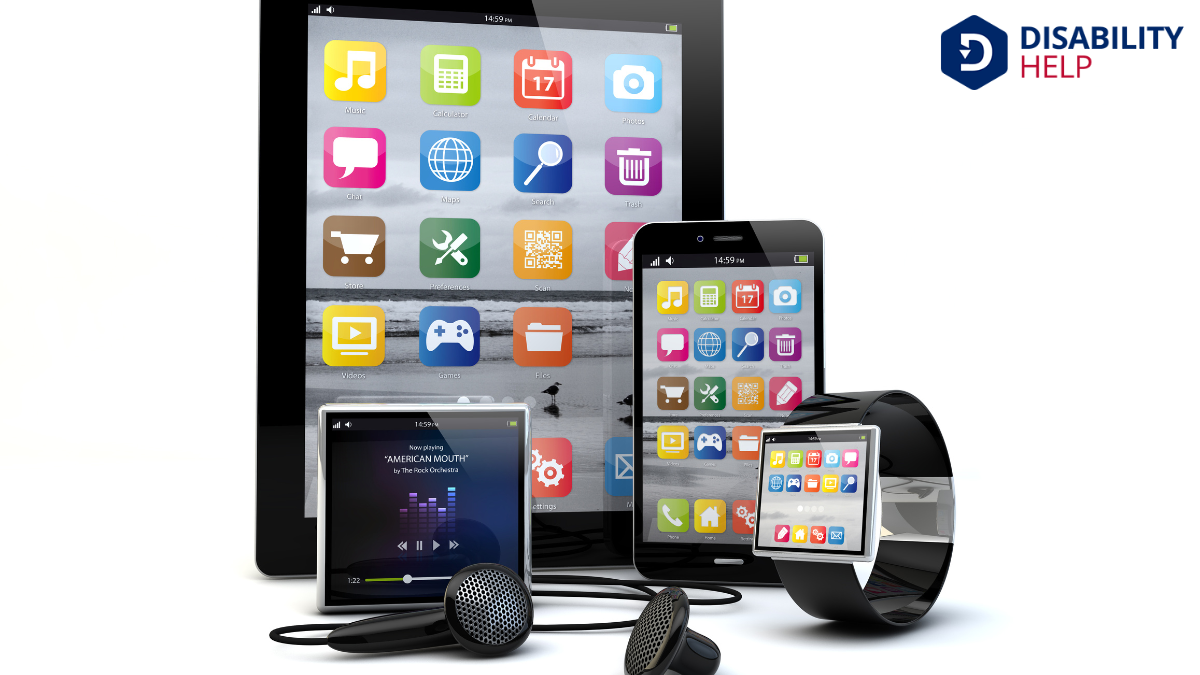When we think about assistive technology, we often picture tools designed specifically for individuals with disabilities. However, many everyday devices, like our smartphones or laptops, don’t fall into this category unless they have special adaptations. It's tempting to label all technology as 'assistive,' but that can blur the lines between convenience and necessity. Let's explore what truly distinguishes assistive technology from the tools we use every day and why this distinction matters.
Key Takeaways
- General devices like smartphones and laptops are not assistive unless specifically adapted for disabilities.
- Standard software, such as word processors, lacks assistive functionality without accessibilityThe design of products, devices, services, or environments to be usable by people with disabilities.... features.
- Ergonomic chairs and kitchen gadgets are comfort-focused, not designed for disability needs.
- Noise-canceling headphones do not address specific disability challenges, classifying them as non-assistive.
- Everyday tools are not assistive unless employed for disability-specific purposes or adaptations.
Defining Assistive Technology
Assistive technology, at its core, refers to any device, software, or equipment that helps individuals with disabilities perform functions that might otherwise be difficult or impossible.
We often think of wheelchairs, hearing aids, screen readers, and speech-to-text programs. These tools empower individuals, offering independence and enhancing quality of life.
As we explore this topic, it's important to understand that assistive technology isn't limited to advanced gadgets. It encompasses simple tools like grab barsBars installed in bathrooms or other areas to provide support and prevent falls for those with mobil... or large print books as well.
Our goal is to provide clarity on what truly qualifies as assistive technology, ensuring we appreciate its broad scope. By understanding its definition, we can better support those who rely on these essential tools in their daily lives.
Common Misconceptions

Let's address some common misconceptions about what qualifies as assistive technology.
We often confuse everyday tools like smartphones for assistive devices, but they're standard gadgets, not specifically designed to aid individuals with disabilities.
Everyday Tools Misunderstood
While it's easy to lump various everyday tools into the category of assistive technology, not all of them truly fit the definition. We often misunderstand items like smartphones and tablets as assistive tech just because they assist us in daily tasks.
However, true assistive technology is specifically designed to aid individuals with disabilities, helping them overcome challenges that might otherwise limit their independence or functionality.
Let's consider tools like kitchen gadgets or ergonomic chairs. They definitely improve our comfort and efficiency, but they're not crafted to meet the unique needs of those with disabilities.
It's essential to distinguish between general convenience tools and those developed with a distinct purpose of addressing specific disabilities. By doing so, we can better appreciate and utilize what genuine assistive technology offers.
Standard Devices Clarification
When we think about standard devices like laptops, smartphones, or even wearable fitness trackers, it's easy to see how they enhance our daily lives and productivity.
Yet, it's essential to distinguish these tools from assistive technology. Here's why standard devices aren't classified as assistive technology:
- Universal DesignThe design of products, environments, and services to be usable by all people, to the greatest exten...: These gadgets cater to the general population, not tailored specifically for individuals with disabilities.
- General Functionality: They provide broad functionalities like communication and entertainment, not solely focused on overcoming specific challenges.
- Accessibility Features: Although they may include accessibility options, these are enhancements rather than primary functions.
- Commercial Availability: Standard devices are widely available in the market, unlike specialized assistive technologies designed for unique needs.
Understanding these distinctions helps us appreciate the true purpose of assistive technology.
Non-Assistive Technology Examples
Recognizing the differences between standard devices and assistive technology helps clear up common misconceptions about what qualifies as non-assistive technology.
Let's consider some examples that often confuse people. Smartphones, tablets, and laptops, while incredibly useful, aren't considered assistive technology unless they include specific adaptations or features designed for individuals with disabilities.
Similarly, standard computer software and applications, like word processors or web browsers, aren't assistive unless they're tailored with accessibility in mind.
We might think of noise-canceling headphones as assistive because they enhance focus, but they don't specifically address a disability need, so they're not classified as assistive technology.
Differentiating Between Tools and Devices
Understanding the distinction between tools and devices is essential when discussing assistive technology. Tools and devices might seem similar, but they serve different roles in enhancing accessibility. We need to differentiate between them to grasp what qualifies as assistive technology.
- Tools: These are objects or instruments that help us perform tasks more efficiently. They usually require manual operation and can be low-tech, like a pencil grip.
- Devices: These are more complex and often electronic, designed to assist with specific needs. They can include items like speech-generating devices.
- Purpose: Tools enhance our abilities, while devices compensate for disabilities.
- Complexity: Tools are generally simpler and less expensive, whereas devices are often sophisticated and costly.
The Role of Context in Classification
When we consider what's classified as assistive technology, context plays a vital role.
A device might serve as assistive technology in one situation but not in another, depending on user-specific needs and the limits of its functionality.
Let's explore how varying contexts can influence whether a tool is considered assistive.
Contextual Device Usage
How often do we stop to contemplate the context in which a device is used when determining if it's truly assistive technology?
Context plays a significant role in classification. It's not just the device itself but rather how, where, and why it’s employed.
Let's consider some scenarios:
- Environment: A magnifying glassA handheld lens that magnifies text or objects, aiding individuals with low vision. in a classroom aids learning, but in a workshop, it’s a tool.
- Purpose: A smartphone used for vision assistance differs from one used for gaming.
- Frequency: A caneA mobility aid used to assist with balance and walking. for daily mobility contrasts with one used occasionally for hiking.
- User's Intent: A device might support independence or simply enhance convenience.
User-Specific Needs
As we shift our focus from contextual device usage, let's examine how individual needs shape what we consider assistive technology.
We recognize that each person's requirements are unique, and this individuality influences whether a device is viewed as assistive. What might be essential for one person could be redundant for another.
This personalization means that the classification of assistive technology isn't static; it's fluid, adapting to specific circumstances and needs.
For example, a smartphone with accessibility features might be crucial for someone with visual impairments, yet it's just a regular device for others.
Situational Functionality Limits
Understanding the role of context is essential in determining what qualifies as assistive technology. We must consider how a device functions not just by its design but within specific situations. A smartphone, for example, isn't inherently assistive technology, but it can become so depending on usage.
Let's explore this further:
- Environment: A device might be helpful in one setting but not in another. Noise-canceling headphones assist in busy areas but not in quiet spaces.
- User Ability: The same tool might aid one person while being unnecessary for another, depending on individual needs.
- Task Requirements: The complexity of a task can shift a device's classification from ordinary to assistive.
- Temporal Changes: Over time, a device's role might evolve, affecting its classification.
Understanding these factors helps us accurately classify the assistive role of technology.
Everyday Gadgets vs. Assistive Tools

When we look around our homes, what distinguishes everyday gadgets from assistive tools? It's about purpose and necessity. Everyday gadgets, like smartphones or coffee makers, are designed for convenience and efficiency. We use them to simplify tasks or enhance our lifestyle.
Assistive tools, however, serve a different role. They're specifically crafted to support individuals with disabilities, enabling them to perform functions they might otherwise find challenging.
Let’s consider a magnifying glass. For some, it’s a handy tool for reading small print. For others with visual impairments, it’s an essential assistive device.
The key difference lies in need versus convenience. While gadgets offer general utility, assistive tools provide targeted help, ensuring accessibility and independence for those who require it.
Understanding this distinction helps us appreciate their unique roles.
Technology for Enhancement vs. Assistance
In our exploration of technology, we encounter tools designed for enhancement and those meant for assistance. Understanding the distinction helps us recognize their purposes and applications.
Enhancement technology aims to boost our capabilities beyond normal limits. These are optional tools. Conversely, assistive technology supports individuals with disabilities to perform everyday tasks.
Let's break this down further:
- Enhancement Technology: Includes devices like high-performance computers or augmented reality tools that improve our productivity or experience.
- Assistive Technology: Refers to items such as hearing aids and screen readers that enable essential functionsThe fundamental job duties of a position, which an individual must be able to perform with or withou....
- Purpose: Enhancement is about achieving more than average; assistance is about reaching parity.
- Usage Context: Enhancement often targets self-improvement, while assistance focuses on enabling basic functioning.
The Importance of Accurate Identification
While distinguishing between enhancement and assistive technologies, it's essential we accurately identify them to confirm they serve their intended purposes. Misidentification can lead to resources being misallocated, limiting the potential benefits for those truly in need.
When we correctly identify assistive technologies, we confirm they empower individuals with disabilities, enhancing their independence and quality of life.
Let's remember that assistive technology is designed to aid specific functional limitations. Meanwhile, technology for enhancement typically serves to improve abilities beyond the norm.
By understanding these differences, we can focus our efforts on supporting those who benefit most from assistance. Accurate identification also fosters innovation, guiding developers to create solutions that address genuine needs.
Together, we can confirm technology reaches those who truly require it.
Conclusion
In understanding assistive technology, we must distinguish between everyday gadgets and true assistive tools. While smartphones, laptops, and ergonomic chairs enhance our convenience, they aren't necessarily designed for individuals with disabilities unless specifically adapted. It's vital to recognize this distinction to guarantee that those who need assistance receive the right support. By accurately identifying what constitutes assistive technology, we can foster greater independence and improve the quality of life for those relying on these essential aids.






